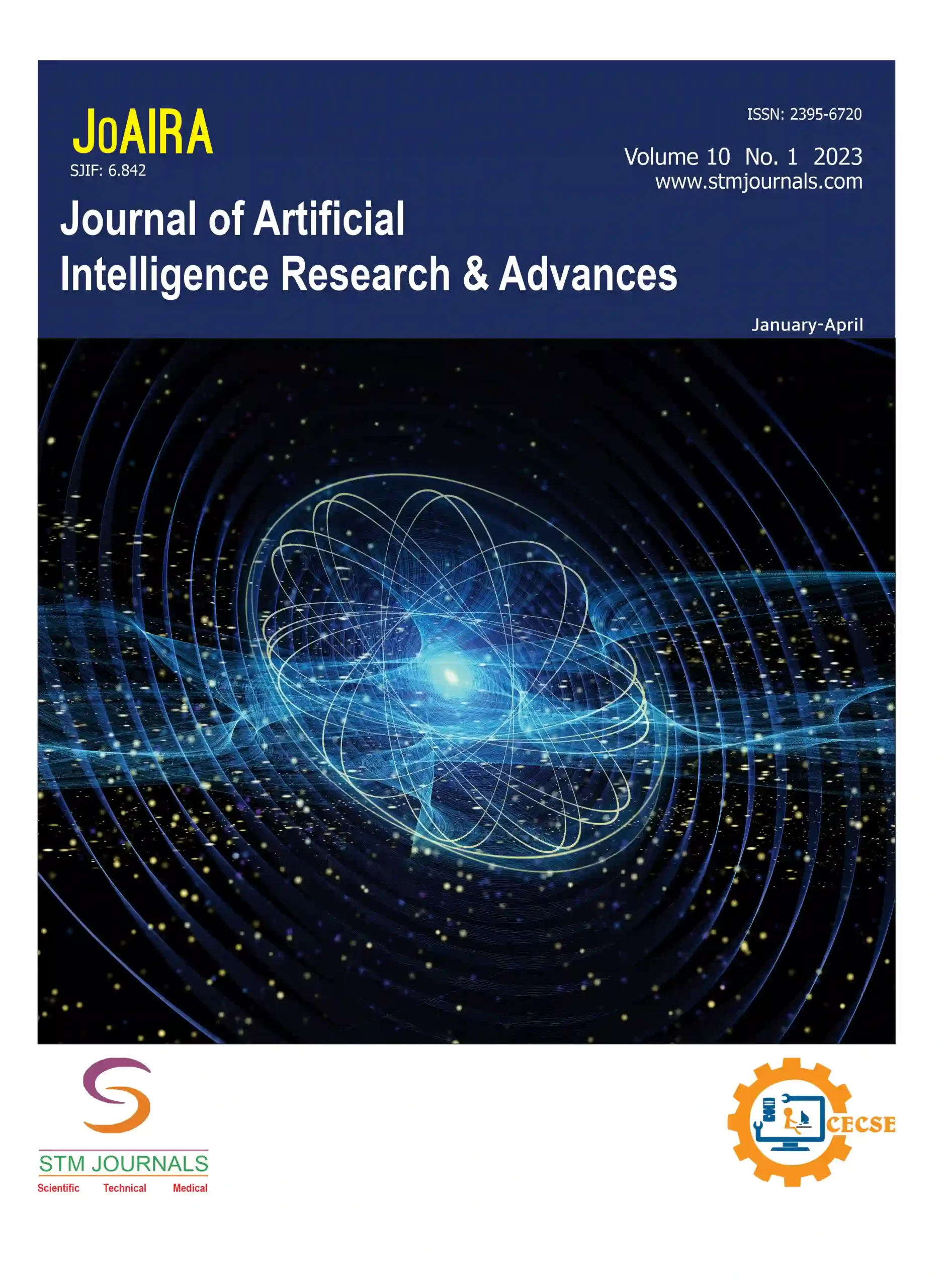
Prashant D. Sawant
- Director Ai-D Consultancy Melbourne Australia
Abstract
In the rapidly evolving domain of artificial intelligence (AI), the efficacy of user-generated prompts has emerged as a critical factor influencing the quality of model-generated responses. Current methodologies for prompt evaluation predominantly rely on post-hoc analysis, which often leads to iterative prompting and increased computational overhead. Furthermore, the challenge of “prompt hallucinations,” where AI models produce irrelevant or nonsensical responses, persists as a significant impediment to effective AI utilization. The present article introduces a novel framework that leverages real-time analysis of prompts (number of tokens to start with) to provide users with immediate feedback on prompt quality. The proposed system employs a dynamic scoring mechanism that assesses prompts against a comprehensive corpus and a set of predefined quality criteria, outputting a relative strength percentage or a 1-10 scale rating which can be displayed by colors (Red to Amber to Green). By integrating this framework into the AI interface, users can iteratively refine their prompts before submission, thereby enhancing the interaction efficiency and reducing the likelihood of hallucinatory outputs. This approach represents a paradigm shift from reactive to proactive prompt optimization, paving the way for more seamless and effective human-AI collaboration. Also, it may revolutionize the way users engage with AI systems, fostering a more productive and harmonious human-AI synergy.
Keywords: Real-time prompt analysis, prompt optimization, AI interaction efficiency, preventing prompt hallucination, human-AI collaboration
[This article belongs to Journal of Artificial Intelligence Research & Advances(joaira)]
References
- Amatriain X. Prompt Design and Engineering: Introduction and Advanced Methods. arXiv. 2024;2401.14423.
- Huang L, Yu WJ, Ma WT, Zhong WH, Feng ZG, Wang HT, et al. A Survey on Hallucination in Large Language Models: Principles, Taxonomy, Challenges, and Open Questions. arXiv. 2023;2311.05232.
- Sun H, An RL. Perspective on RLHF, Prompting, and Beyond. arXiv. 2023;2310.06147.
- Mosbach M, Pimentel T, Ravfogel S, Klakow D, Elazar Y. Few-Shot Fine-Tuning vs. in-Context Learning: A Fair Comparison and Evaluation. arXiv. 2023;2305.16938. DOI: 10.18653/v1/2023.
findings-acl.779. - Dhuliawala S, Komeili M, Xu J, Raileanu R, Li X, Celikyilmaz A, et al. Chain-of-Verification Reduces Hallucination in Large Language Models. arXiv. 2023;2309.11495.
- Besta M, Blach N, Kubicek A, Gerstenberger R, Podstawski M, Gianinazzi L, et al. Solving Elaborate Problems with Large Language Models. arXiv. 2023;2308.09687.
- What are AI hallucinations? IBM. Available from: https://www.ibm.com/topics/ai-hallucinations. Accessed on 14 March 2024.
- Salvagno M, Taccone FS, Gerli AG. Artificial intelligence hallucinations. Crit Care. 2023;27:180. DOI: 10.1186/s13054-023-04473-y, PubMed: 37165401.
- Bentley SV, Naughtin C. Both humans and AI hallucinate – But not in the same way. Available from: https://www.csiro.au/en/news/All/Articles/2023/June/humans-and-ai-hallucinate. Accessed on 14 March 2024.
- Maleki N, Padmanabhan B, Dutta K. AI Hallucinations: A Misnomer Worth Clarifying. arXiv. 2024;2401.06796.
- Bruno A, Mazzeo PL, Chetouani A, Tliba M, Kerkouri MA. Insights into Classifying and Mitigating LLMs’ Hallucinations. arXiv. 2023;2311.08117.
- Siriwardhana S, Weerasekera R, Wen E, Kaluarachchi T, Rana R, Nanayakkara S. Improving the domain adaptation of retrieval augmented generation (RAG) models for open domain question answering. Trans Assoc Comput Linguist. 2023;11:1–17. DOI: 10.1162/tacl_a_00530.
- Gao YF, Xiong Y, Gao XY, Jia KX, Pan JL, Bi YX, et al. Retrieval-Augmented Generation for Large Language Models: A Survey. arXiv. 2023;2312.10997.
- Lewis P, Perez E, Piktus A, Petroni F, Karpukhin V, Goyal N, et al. Retrieval-Augmented Generation for Knowledge-Intensive NLP Tasks. arXiv. 2020;2005.11401.
- Prompt engineering for generative AI. Google. Available from: https://developers.google.com/
machine-learning/resources/prompt-eng. Accessed on 14 March 2023. - Skulmowski A, Xu KM. Understanding cognitive load in digital and online Learning: A new perspective on extraneous cognitive load. Educ Psychol Rev. 2022;34:171–196. DOI: 10.1007/s10648-021-09624-7.
- Trotta A, Ziosi M, Lomonaco V. The future of ethics in AI: Challenges and opportunities. AI Soc. 2023;38:439–441. DOI: 10.1007/s00146-023-01644-x.
- Shams RA, Zowghi D, Bano M. AI and the quest for diversity and inclusion: A systematic literature review. AI Ethics. 2023. DOI: 10.1007/s43681-023-00362-w.
- Crowell R. Why AI’s diversity crisis matters, and how to tackle It. Nature. DOI: 10.1038/d41586-023-01689-4, PubMed: 37208514.
- Howard A, Isbell C. Diversity in AI: The invisible men and women. MIT Sloan Manag Rev. 2020.
- Zowghi D, da Rimini F. Diversity and Inclusion in Artificial Intelligence. arXiv. 2023;2305.12728.
- Collins S. How to use Promptfoo for LLM testing. The deep hub Feb 2024. Medium. Available from: https://medium.com/thedeephub/how-to-use-promptfoo-for-llm-testing-13e96a9a9773. Accessed on 16 March 2024.
- Leung HKN, Wong PWL. A study of user acceptance tests. Softw Qual J. 1997;6:137–149. DOI: 10.1023/A:1018503800709.
- Alto V. Evaluating LLM-powered applications with Azure AI studio. Medium. Available from: https://medium.com/microsoftazure/evaluating-llm-powered-applications-with-azure-ai-studio-b3cec3eba322. Accessed on 16 March 2024.
- Xia BM, Lu QH, Zhu LM, Lee SU, Liu Y, Xing ZC. Towards a responsible AI metrics catalogue: A collection of metrics for AI accountability. arXiv. 2023;2311.13158.
- Berman G, Goyal N, Madaio M. A Scoping Study of Evaluation Practices for Responsible AI Tools: Steps Towards Effectiveness Evaluations. arXiv. 2024;2401.17486. DOI: 10.1145/3613904.
- Xia B, Lu Q, Zhu L, Lee SU, Liu Y, Xing Z. Towards a responsible AI metrics catalogue: A collection of metrics for AI accountability. Semantic Scholar. 2023. Corpus ID: 265352192.
- Shin T, Razeghi Y, Logan RL, Wallace E, Singh S. AutoPrompt: Eliciting Knowledge from Language Models with Automatically Generated Prompts. arXiv. 2020;2010.159801.

Journal of Artificial Intelligence Research & Advances
| Volume | 11 |
| Issue | 01 |
| Received | March 26, 2024 |
| Accepted | March 27, 2024 |
| Published | April 5, 2024 |

